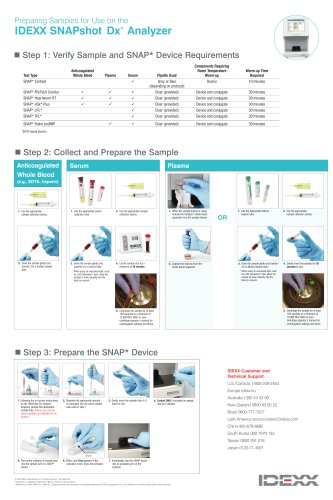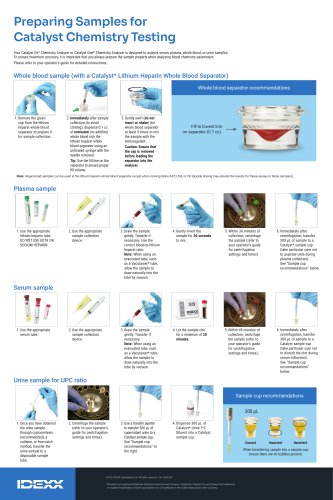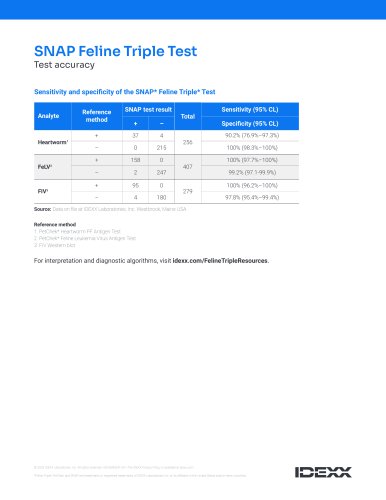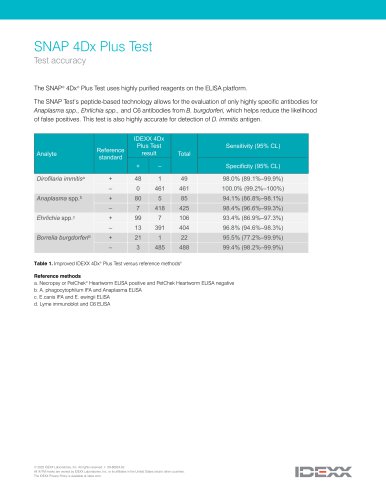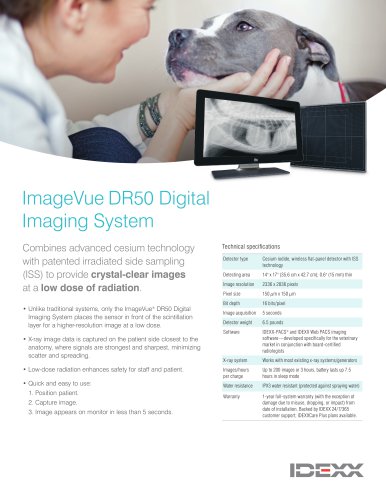
Catalog excerpts

IDEXX VetStat* Electrolyte and Blood Gas Analyzer Operator’s Guide
Open the catalog to page 1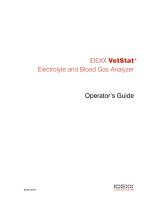
IDEXX VetStat* Electrolyte and Blood Gas Analyzer Operator’s Guide
Open the catalog to page 2
Proprietary Rights Notice Information in this document is subject to change without notice. Companies, names and data used in examples are fictitious unless otherwise noted. No part of this document may be reproduced or transmitted in any form or by any means, electronic, mechanical or otherwise, for any purpose, without the express written permission of IDEXX Laboratories. IDEXX Laboratories may have patents or pending patent applications, trademarks, copyrights or other intellectual property rights covering this document or subject matter in this document. The furnishing of this document...
Open the catalog to page 4
Introduction The VetStat analyzer is an electrolyte and blood gas analyzer for veterinary use. This portable analyzer provides fast, accurate results via single-use disposable cassettes using samples of whole blood, plasma or serum. The VetStat analyzer offers an easy-to-use touch-screen platform, convenient veterinary-specific menu options and species-specific reference ranges for canine, feline and equine samples. The VetStat analyzer is designed to provide rapid results for sodium (Na+), potassium (K+), chloride (Cl–), ionized calcium (Ca++), hydrogen ion concentration (pH), partial...
Open the catalog to page 10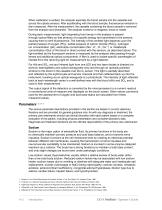
When calibration is verified, the analyzer aspirates the blood sample into the cassette and across the optode sensors. After equilibrating with the blood sample, fluorescence emission is then measured. After the measurement, the cassette containing the blood sample is removed from the analyzer and discarded. The analyzer contains no reagents, blood or waste. During each measurement, light originating from lamps in the analyzer is passed through optical filters so that photons of a specific energy are transmitted to the sensors, causing them to emit fluorescence. The intensity of this...
Open the catalog to page 11
Elevated sodium values (hypernatremia) are associated with conditions of water loss in excess of salt loss through profuse sweating, prolonged hyperpnea, severe vomiting or diarrhea, diabetes insipidus or diabetic acidosis, increased renal sodium conservation in hyperaldosteronism, hyperadrenocorticism, inadequate water intake because of coma or hypothalamic diseases, dehydration, or excessive saline therapy. The sodium value obtained can be used in the diagnosis or monitoring of all disturbances of the water balance, infusion therapies, vomiting, diarrhea, burns, heart and kidney...
Open the catalog to page 12
pH The pH value of the blood, serum or plasma may be the single most valuable factor in the evaluation of the acid-base status of a patient. The pH is one of the most tightly controlled parameters in the body and indicates the balance between the renal (kidney), respiratory (lung) and blood buffer systems. The causes of abnormal blood pH values are generally classified as: • Primary bicarbonate deficit—metabolic acidosis • Primary bicarbonate excess—metabolic alkalosis • Primary hypoventilation—respiratory acidosis • Primary hyperventilation—respiratory alkalosis An increased pH value...
Open the catalog to page 13
reactions, infectious diseases, or secondary to chronic inflammation, or renal disease. Other nonanemia causes of a decrease in hemoglobin include iron deficiency, deficiency of other precursors to hemoglobin, portosystemic shunts and hepatic atrophy. Increases in the amount of hemoglobin in the blood are most often a result of polycythemia, or an increase in the number of erythrocytes in circulation. Polycythemia is usually classified as either relative or absolute. Relative polycythemia may be caused by splenic contraction, dehydration or hypovolemia. Absolute polycythemia may be caused...
Open the catalog to page 14
Fasting hypoglycemia can be due to insulinomas, nonpancreatic tumors, endocrine disorders, liver failure, sepsis, renal failure or autoimmune disorders. Other conditions that can cause hypoglycemia include insulinomas, other nonpancreatic tumors, hepatic failure (including portosystemic shunts), hypoadrenocorticism and sepsis. tCO2 tCO2 is the total amount of carbon dioxide measured in the blood sample. tCO2 is composed of: • Bicarbonate (HCO3–) • Carbonic acid (H2CO3) • Carbon dioxide (CO2) The blood buffer system, which plays an important role in the acid-base status of the patient, uses...
Open the catalog to page 15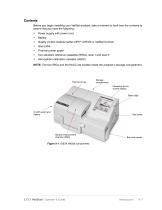
Contents Before you begin installing your VetStat analyzer, take a moment to look over the contents to ensure that you have the following: • Power supply with power cord • Battery • Quality control material (either OPTI* CHECK or VetStat Control) • Gas bottle • Thermal printer paper • Two standard reference cassettes (SRCs), level 1 and level 3 • Hemoglobin calibration cassette (HbCC) NOTE: The two SRCs and the HbCC are located inside the analyzer’s storage compartment. Thermal printer Storage compartment Interactive touchscreen display Status light On/Off switch and battery Sample...
Open the catalog to page 16
Analyzer Components Touch screen Before installing the VetStat analyzer, it is important to familiarize yourself with the analyzer’s components (Figure A-1). Status light Interactive Touch-Screen Display You communicate with the analyzer through a touch screen (Figure A-2). Status Light To the right of the touch screen is a two-color status light (Figure A-2). The status light illuminates when the analyzer is in use, and remains unlit when idle. During operation you will see one of the following: Figure A-2: Touch screen and status light • Green Light—The analyzer is in the process of...
Open the catalog to page 17
Thermal Printer Peristaltic pump The thermal printer is accessed by raising the door on the top left of the analyzer (Figure A-5). The printer uses heat-sensitive, document-grade paper that is resistant to fading. The analyzer can print patient values, quality control values and calibration values, as well as patient and diagnostic information. Thermal printer Peristaltic Pump Contained within the same compartment as the thermal printer is a peristaltic pump cartridge that is used to transport liquids and gases. All liquids are contained within the VetStat cassette and do not enter the...
Open the catalog to page 18All Idexx Laboratories catalogs and technical brochures
Archived catalogs
-
Pseudalert
8 Pages
-
IDEXX SNAP 4Dx Plus
2 Pages
-
SNAPshot® DSR
2 Pages
-
ELISA Tips
1 Pages
-
Digital Imaging Brochure
10 Pages


